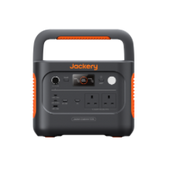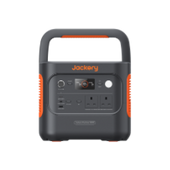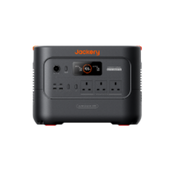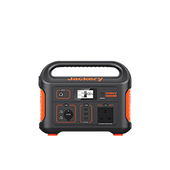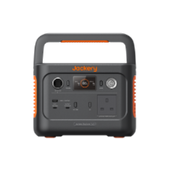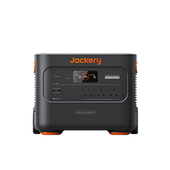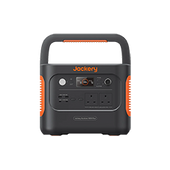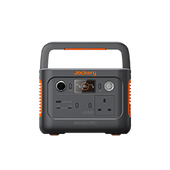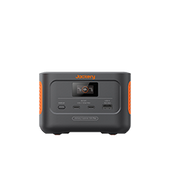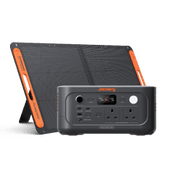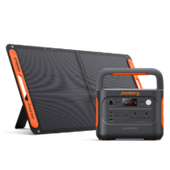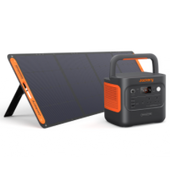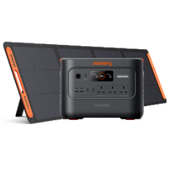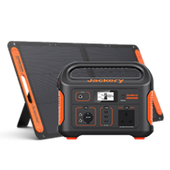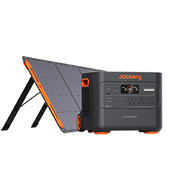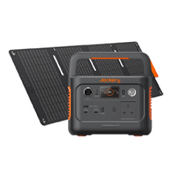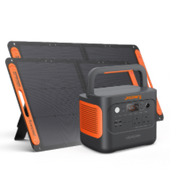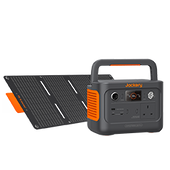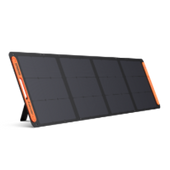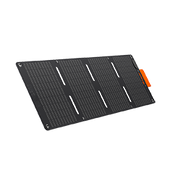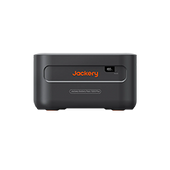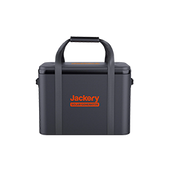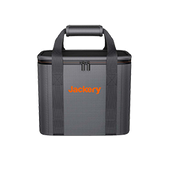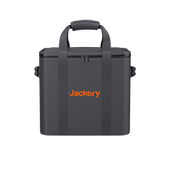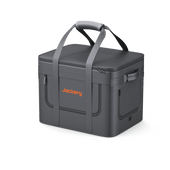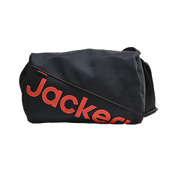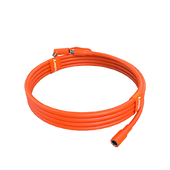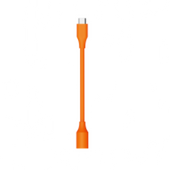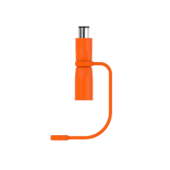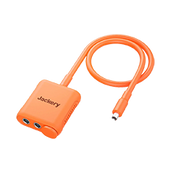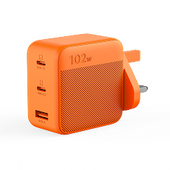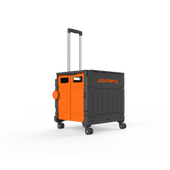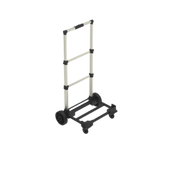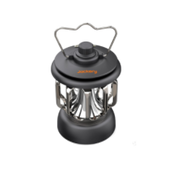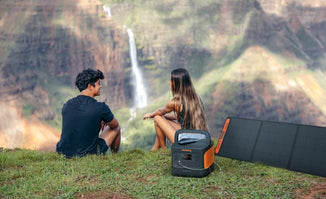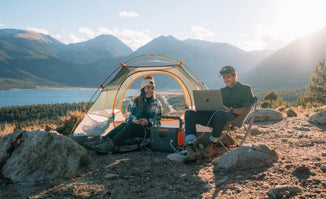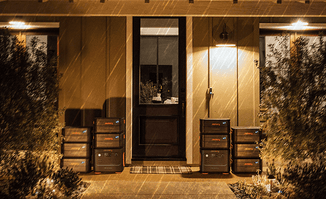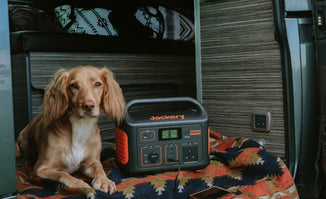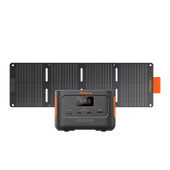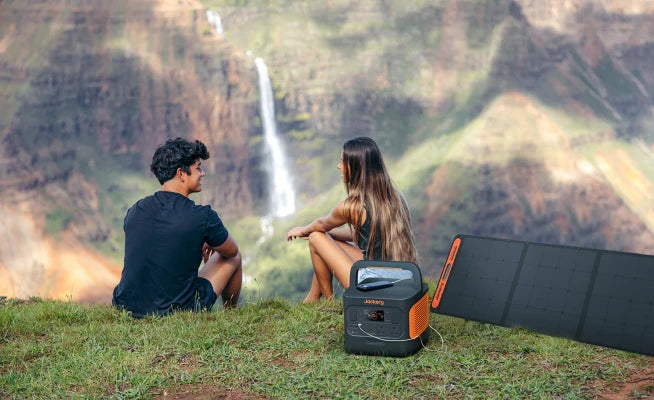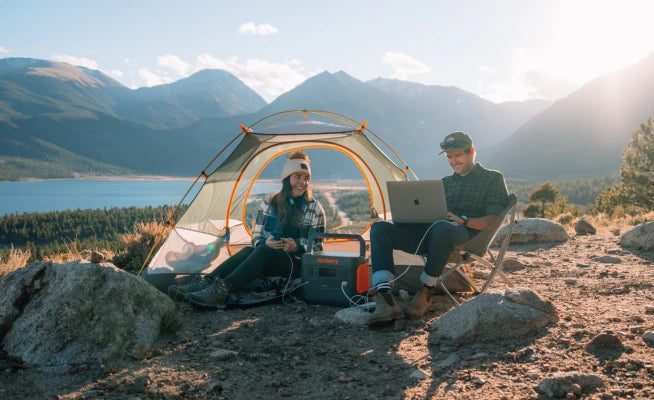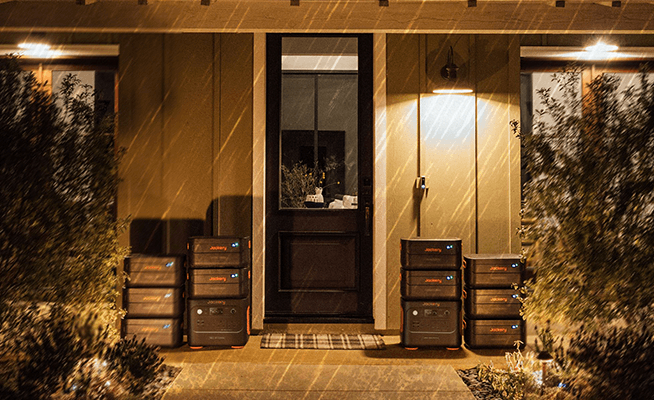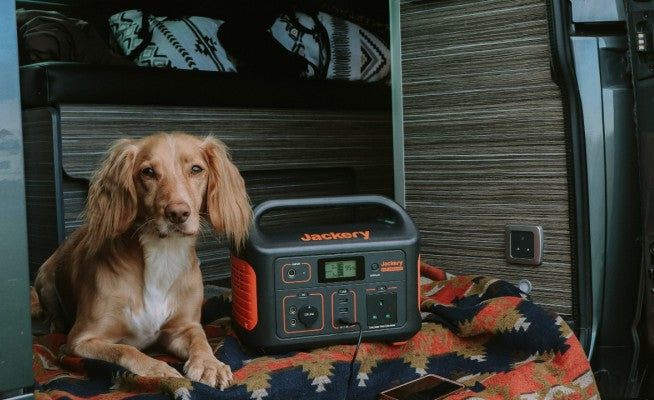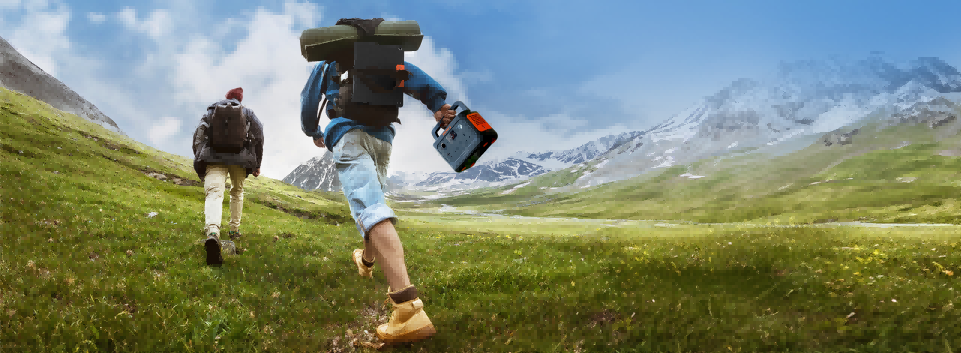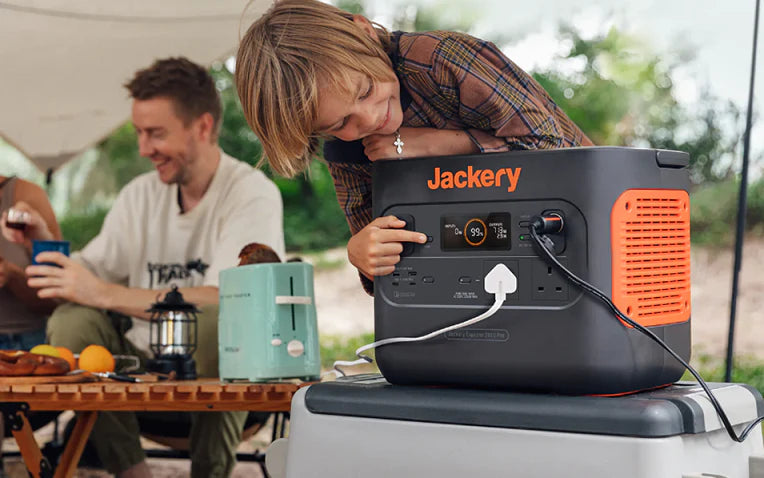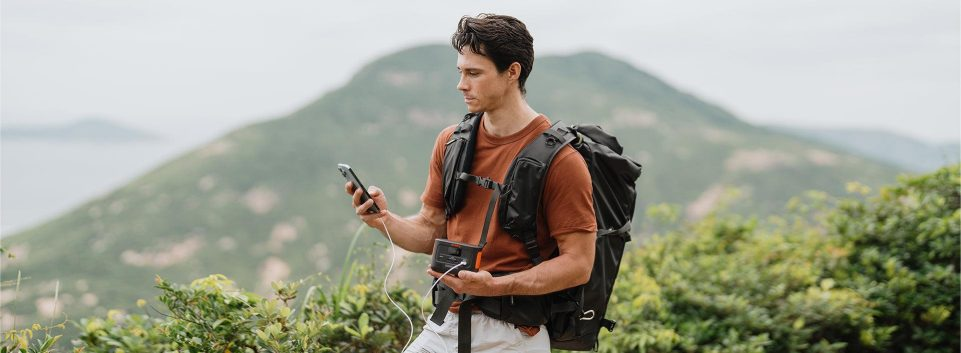Skiing is an aerobic exercise for physical fitness, a way to enhance relationships, and a way to enjoy nature. Scotland has many excellent ski resorts, such as Glencoe and Nevis Mountains. These resorts have complete facilities and diverse ski trails suitable for ski enthusiasts of different levels.
Therefore, at the ski resorts in Scotland, you can share the fun of skiing with your family and friends and spend an unforgettable time together. The following is a detailed guide to show you everything about skiing in Scotland.
Taking the proper skiing gear and understanding relative skiing skills or tips are essential for your ski trip in Scotland. In addition to the skiing equipment, a portable power supply is a nice-to-have item to charge your phone, camera, GPS device, electric hand warmer, etc. So, we recommend Jackery Portable Power Station to charge your electronics and devices outdoors in a compact size.
|
Key Takeaways: |
|
- The Scottish Highlands are cold and snowy in winter, providing excellent natural conditions for skiing. - The ski season in Scotland usually starts in December and lasts until March or early April of the following year. - Scotland has five outdoor ski resorts: Cairngorms, Glencoe, Glenshee, Nevis and Lechte. Please choose a Scottish ski resort that suits your skiing level and interests. - Understanding and complying with the ski resort rules is the basis for skiing safety. - We recommend Jackery Explorer 500 or 240 v2 portable power station to charge your essentials in winter. |
Can You Ski in Scotland?
Scotland attracts countless tourists with its magnificent natural scenery and profound cultural heritage and has become a new favourite for ski enthusiasts in recent years. Compared with traditional Alpine ski resorts, Scottish ski resorts provide ski enthusiasts with a different experience and unique advantages.
Unique Natural Conditions
The Scottish Highlands are cold and snowy in winter, and the snow-covered mountains provide excellent natural conditions for skiing. Most of Scotland's ski resorts are in high-altitude areas (such as the Nevis Mountains), where the snow quality is fantastic, the snow is deep, and the ski season is long.
Diverse Ski Resort Options
Scotland has many world-class ski resorts suitable for ski enthusiasts of different levels. You can find a suitable ski slope here for beginners to senior skiers. For example, Glencoe Mountain Resort offers 20 slopes, including the longest and steepest Flypaper slope and gentle slopes suitable for beginners.
Rich Ski Facilities
Scotland's ski resorts have diverse slopes and complete supporting facilities. Most resorts offer ski equipment rental, ski lessons, and professional guidance services. For example, Cairngorm Mountain Ski Resort has a new ski school and expert instructors for all levels.
In short, Scotland has become an ideal choice for ski enthusiasts with its unique natural conditions, diverse ski resorts and complete supporting facilities. Whether you are a beginner or an experienced ski enthusiast, you can find the ski slopes and activities that suit you here.
When is the Best Time to Ski in Scotland?
Due to Scotland's higher latitude, its ski season is relatively short and significantly affected by weather changes. The ski season in Scotland usually starts in December and lasts until March or early April of the following year. January and February are the peak skiing seasons, with the best snow conditions and a concentration of various skiing activities and events.
Overview of Skiing in Scotland in December
Although December is the beginning of the ski season in Scotland, the ski resorts usually have accumulated enough snow to provide a good skiing experience. In addition, there are relatively few tourists in December, and the cost of skiing is relatively low. During Christmas and New Year, ski resorts in Scotland also hold various celebrations to add to the festive atmosphere.
Overview of Skiing in Scotland in January and February
January and February are the golden periods for skiing in Scotland. When the temperature is low, the snow quality is stable, and the skiing conditions are optimal, various skiing events and activities occur, providing ski enthusiasts with opportunities to watch and participate. However, due to the large number of people, booking accommodation and ski equipment in advance is necessary.
Overview of Skiing in Scotland in March
Snow conditions in Scotland are still good in early March, but as the temperature gradually rises, the snow begins to soften, and the ski slopes in high-altitude areas may be affected. In addition, March is the end of the ski season, and the ski fee is relatively low, which is suitable for ski enthusiasts with limited budgets.
However, the weather in Scotland is unpredictable, and the temperature and snowfall during the ski season will also fluctuate. When planning a ski trip, paying attention to the local weather forecast and snow condition report is recommended. In addition, the high mountain areas in Scotland are windy, so selecting a period with less wind to ski is recommended to ensure safety.
Where Can You Go Skiing in Scotland?
Whether riding through stunning mountain scenery or having fun at an indoor ski slope, Scotland has a lot to offer ski enthusiasts. Five of Scotland's ski resorts offer some of the UK's best outdoor skiing and snowboarding. Here are five of Scotland's outdoor ski resorts and ski centres:

1. Cairngorm Mountain Ski Centre
Located just outside the Highland town of Aviemore, Cairngorm Mountain Ski Resort is the highest ski resort in the UK. A cable car takes skiers to 1,230 meters above sea level. CairnGorm Mountain is known for its beautiful scenery, and it has runs for beginners (green runs) and advanced (black runs).
If you prefer freestyle skiing, there is a terrain park, and a halfpipe can be built with enough snow. Nearby, Aviemore is a popular tourist town with many hotels and restaurants, a campfire pub, and a reindeer farm.
Location: In the Cairngorm National Park.
Web: Cairngorm Mountain Ski Centre
Features: Fully maintained freestyle park, mountain tubing and adventure play park, motorhome park, on-site equipment rental, snowsports school
Best for: Many beginners
2. Glencoe Mountain
Glencoe is Scotland's oldest ski resort, opening the first permanent lift in 1956. Glencoe Mountain offers equipment rental and ski lessons for beginners, just like all ski centres in Scotland. As far as ski centres go, Glencoe isn't the biggest or the tallest, but it's an excellent base for backcountry adventures. On a clear winter's day, the views from the top of the hill over the eponymous glens and beyond are some of the most stunning in the UK.
Location: On the west coast of Scotland.
Web: Glencoe Mountain
Features: Avalanche transceiver training park, the Haggis Trap, on-site equipment rental, Snowsports school, camping and electric hookups available, beginners dry slope
Best for: Incredible views, staying on-site
3. Glenshee Ski Centre
Glenshee is halfway between Blairgowrie and Braemar on a winding, snowy scenic route. For those seeking a wilder experience, Glenshee offers several off-piste trails in addition to its piste. As with all ski areas in Scotland, Glenshee's winter opening dates are tied to the weather, so be sure to check the website if you're planning an early or late trip.
Location: In the Cairngorm National Park.
Web: Glenshee Ski Centre
Features: On-site equipment and clothing rental, snowsports school, natural halfpipe (Meall Odhar), summer mountain biking
Best for: Serious skiers
4. Lecht Ski Centre
Located on the eastern side of the Cairngorms National Park, Lecht Ski Centre is the smallest ski resort in the Scottish Highlands. What Lecht lacks in size and vertical drop, it more than makes up for in atmosphere. Lecht is particularly well-suited for snowboarding and freestyle skiing, and the terrain park always works exceptionally well, thanks to its innovative rails and beautifully shaped kickboards. As a result, Lecht Ski Resort attracts many freestyle enthusiasts.
Location: In the Cairngorm National Park.
Web: Lecht Ski Centre
Features: Snowboard fun park and rail park area, on-site equipment rental, Snowsports school, sledging (away from the main ski runs), summer mountain biking
Best for: Beginners, casual skiers, and people travelling with kids
5. Nevis Range Mountain Resort
Nevis Range Mountain Resort is located on the west coast of Scotland, close to Fort William. If you're eager to experience off-piste skiing in Scotland, the Nevis Range is the place for you. In addition to the stunning scenery, you'll find the most exciting off-piste skiing terrain here. On the mountain's north side, you can also take the UK's only mountain cable car and enjoy the beautiful scenery in the fresh air. Not only is this great for sightseeing, but it's the best way to get to the base of the snow sports area.
Location: On the west coast of Scotland.
Web: Nevis Range Mountain Resort
Features: Lift-accessed backcountry skiing, World Cup Downhill Mountain Biking (one for the summer), on-site equipment and clothing rental, Snowsports school, sledging, beginners dry slope
Best for: Going off-piste
How to Plan the Perfect Ski Trip to Scotland?
In Scotland, the snow-capped mountains and vast snow fields provide a perfect paradise for skiing enthusiasts in winter. Here is a detailed guide to help you plan a perfect ski trip in Scotland.

Timing
Choosing a hotel or resort close to the ski resort can save transportation time. Some ski resorts also offer package services, including accommodation and ski tickets. Most importantly, please find out the ski resort's seasonal opening hours in advance so that you can arrange your trip.
Choosing the Right Ski Resort
Scotland has many excellent ski resorts with different characteristics and difficulty levels. Choose a suitable destination according to your skiing level and interests.
For beginners, The Lecht and Glenshee Ski Centre are both good choices. They provide wide snow trails and have professional instructors to guide you. Nevis Range Mountain Resort and Glencoe Mountain Resort are more suitable for ski enthusiasts with a sure foundation.
Booking Ski Equipment and Lessons
Most ski resorts provide rental services for essential equipment such as snowboards, snow boots, helmets, etc. In addition, it is recommended that beginners or tourists who want to improve their skiing skills take ski courses with professional coaches.
Transportation Arrangements
Most international tourists fly to Edinburgh or Glasgow Airport, then transfer to the ski resort by train or long-distance bus. Of course, many people drive to the ski resorts in Scotland. If you drive yourself, you need to pay attention to snow driving safety. Installing snow tyres or carrying anti-skid chains is recommended.
Other Activities
In addition to skiing, Scotland's ski resorts offer a wealth of snow entertainment projects, such as snow hiking and natural hot springs.
Scotland has world-class ski resorts, a rich cultural heritage, and food. In addition to skiing, you can visit local castles, museums and art exhibitions, taste Scottish whiskey, and experience the unique charm of Scotland.
What to Pack for Skiing in Scotland?
Whether you are a beginner or an experienced skiing enthusiast, preparing the right equipment is an essential guarantee for enjoying the fun and safety of skiing. The following is a detailed list of Scottish skiing equipment to help you easily cope with the challenges of the snow field.

Head Protection Equipment
The following are the head protection equipment you need to prepare for skiing in Scotland:
Helmet: Choose a helmet with MIPS (Multi-Directional Impact Protection System) to disperse the impact force effectively.
Snow goggles: You should choose anti-fog and UV-proof snow goggles and prepare to replace the lenses day and night according to weather conditions.
Face mask: The mask can protect facial skin and prevent frostbite and sunburn.
Body Protection Equipment
The following are the body protection equipment you need to prepare for skiing in Scotland:
Skisuits and ski pants: Please try to choose skisuits and ski pants with bright colours, waterproofing, and windproofing functions.
Ski poles: Skiers need ski poles to help move and maintain balance.
Protective gear: It is recommended to choose knee pads, hip pads, wrist pads, etc.
Quick-drying clothes: Quick-drying clothes can quickly wick sweat and dry the body.
Foot Protection Equipment
The following are the foot protection equipment you need to prepare for skiing in Scotland:
Snowshoes: Snowshoes should fit your feet and have a slight squeeze.
Snow socks: Please choose long and thick ski socks.
Snowboards and bindings: It is recommended that beginners rent snowboards and bindings at the ski resort and then buy the equipment that suits them after they are sure to ski for a long time.
Other Equipment
In addition to professional skiing equipment, you must bring drinking water and food (chocolate, beef jerky, etc.) to replenish your energy. Of course, you must also prepare a ski backpack to pack all the items you need during skiing. Finally, a portable power station can allow you to power electronic devices in the ski resort freely.

In this electronics-driven world, power is as essential as water and food. When you and your family plan sledging outside, you'll need a reliable, portable power source to charge your gear. This is where a small generator for electricity comes in handy. With a small generator, you can get power right where you are, which makes outdoor skiing easier.
Here, we introduce Jackery Portable Power Station, the portable power supply for charging your essential skiing equipment, such as the electric hand warmer, communication devices, GPS, and more. Learn more about it in the following part.
|
Scotland Ski Equipment List |
|
|
Head Protection Equipment |
Helmet Snow goggles Face mask |
|
Body Protection Equipment |
Ski suits and ski pants Ski poles Protective gear Quick-drying clothes Gloves |
|
Foot Protection Equipment |
Snowshoes Snow socks Snowboards and bindings |
|
Other Equipment |
Drinking water High-calorie foods (chocolate, beef jerky, etc.) Ski backpack Portable power station |
Jackery Portable Power Stations Explained
When skiing in Scotland, a portable power station will help you charge your phones, tablets, cameras, computers, and other electronics. Most small generators have more than one output port to power various electronics. As the sun goes down, you need the proper lighting to enjoy being outside and stay safe until you reach your goal. You can run lighting tools with a portable power station for a long time.
A Jackery Portable Power Station is a small, battery-powered gadget that lets you get power on the go. It has AC, DC, and USB ports to run most home and outdoor appliances and smartphones. It's quieter than gas engines, doesn't emit pollution, and can be charged by solar panels, wall outlets, or car chargers.
Jackery Explorer 500
Let's say you don't need as much power and only want to power things like a laptop, smartphone, and space heaters. The Jackery Explorer 500 is an ideal small generator that won't take up much space.
The Jackery Explorer 500 Portable Power Station is a small power station about the size of a basketball and weighs 13.3 pounds (6 kg). It has a 500W power source (1000W surge) and a 518Wh battery capacity. It also has several output ports that can run multiple devices simultaneously. Here are some of the things that the Jackery Explorer 500 can do:

• Power and Capacity: The power source is 500W (1000W surge peak), and the battery can hold 518Wh.
• Charging Ports and Times: There are three charging ports, one for solar charging (9.5 hours with 1 Jackery SolarSaga 100W solar panel), one for AC charging (7.5 hours), and one for car charging (8 hours).
• Multiple Ports: one AC (500W) output, two DC (12V, 7A) outputs, one garage (12V, 10A), three USB-A (5V, 2.4A) outputs, one AC input, and one DC input.
• Compatibility: Power common tools and small appliances, like laptops, projectors, smartphones, space heaters, toasters, and more. You don't have to worry about problems with widely used devices.
• Safety: The Battery Management System (BMS), which is the best in its class, ensures that skiing is a breeze. 500 cycles at 80% or more of full capacity. 14-104°F (Jackery Explorer 500 Portable Power Station) and 14-149°F (Jackery SolarSaga Solar Panels).
The following are the working hours for using Jackery Explorer 500 (518Wh) to charge skiing equipment or your electronics:
|
Skiing Electronics |
Working Hours |
|
Electric Hand Warmer (100W) |
4.1H |
|
Flashlight (30W) |
13.8H |
|
Phone (27W) |
15.3H |
|
Camera (10W) |
41.4H |
|
GPS Device (60W) |
6.9H |
(*The working hours are only for reference; the actual working hours depend on your usage.)
Jackery Explorer 240 v2
Compared to the Explorer 500, the Explorer 240 v2 is smaller and easier to take on your skiing trip. The Explorer 240 v2 Portable Power Station is small but has a strong 256Wh capacity. At about 7.94 lbs and with a tiny foldable handle, it is more lightweight and portable than conventional models, allowing for effortless storage in your bag.
It has one wall outlet, USB-A port, and USB-C port to charge up to five devices simultaneously. This makes it easy to power multiple tools quickly and efficiently. Here are some of the features that the Jackery Explorer 240 v2 have:

• Emergency Charging Mode: Through an app, the Explorer 240 v2 Portable Power Station can be fully charged from 0% to 100% in one hour. This is possible with the Emergency Charging Mode. Your portable power pack will ensure you never run out of power while on the go.
• Multiple Recharging Methods: Quickly charge your gadgets and enjoy longer battery life. No matter where you go, stay charged and linked. You can recharge it with SolarSaga 80W for 5 hours, a wall outlet for 2 hours, and even carport recharging for 5 hours.
• Longer Lifespan: It used to be an NCM battery but has been upgraded to an LFP battery. It has an impressive 3,000 life cycle and can last up to 10 years, making it a safe camping and hiking companion.
• IEC Certified: With IEC 62368 Impact Resistance Certification and the improved ChargeShield 2.0, the Jackery 240 v2 is the safest and most reliable charger on the market. It also meets strict EMC Class-B standards, meaning your home gadgets will work without problems.
The following are the working hours for using Jackery Explorer 240 (256Wh) to charge skiing equipment or your electronics:
|
Skiing Electronics |
Working Hours |
|
Electric Hand Warmer (100W) |
2H |
|
Flashlight (30W) |
6.8H |
|
Phone (27W) |
7.6H |
|
Camera (10W) |
20.5H |
|
GPS Device (60W) |
3.4H |
(*The working hours are only for reference; the actual working hours depend on your usage.)
Safety Tips for Skiing in Scotland
Skiing is a fun and challenging sport, but safety should never be ignored while enjoying the speed and passion. Here are some safety precautions to pay attention to when skiing in Scotland to ensure that you can enjoy the fun of skiing while ensuring your safety to the greatest extent.

Tip 1: Pay attention to weather and snow conditions.
Before skiing, understand the weather forecast and snow conditions of the day, and avoid skiing in bad weather or poor snow conditions. In particular, you need to pay special attention to warning information and not go to areas with avalanche risks. In addition, understand and abide by the regulations of the ski resort, such as prohibiting skiing in specific regions and prohibiting night skiing.
Tip 2: Do a good warm-up.
Warm-up activities help improve the functional response ability of various body parts and help the body adapt to intense exercise during skiing. Therefore, please do a good warm-up exercise before skiing, such as jogging, patting the muscles of the whole body, moving the arms and squatting, etc., which can reduce sports injuries.
Tip 3: Pay attention to diet and water supplementation.
Skiing is a high-intensity aerobic exercise that can easily cause dehydration and energy consumption. To keep your body in good condition, carry high-energy portable foods such as beef jerky and chocolate and replenish water regularly.
Tip 4: Safe skiing skills.
First, do not unthinkingly pursue speed and difficulty when skiing, and avoid accidents beyond your ability. Second, keep a sufficient distance from others on the snow track, especially when skiing in groups. Finally, if you feel like you will fall, you should quickly throw away your poles, protect your head and chest with both hands and fall forward.
Tip 5: Emergency handling.
Remember the ski resort's rescue phone number. If an accident occurs, call the rescue phone number in time for help. If you find someone injured, do not move them at will and report to the ski resort manager in time. In addition, if you encounter a malfunction and stop the cable car, stay calm, follow the instructions on the radio, keep warm, and wait for professional rescue.
Skiing in Scotland FAQs
The following are the frequently asked questions about skiing in Scotland:
1. Is Scotland any good for skiing?
Scotland is a seriously underrated ski destination. The ski resorts are easily accessible, well-equipped, and much cheaper than places like the Alps or Japan. Scotland has five major ski resorts, including Glencoe and Nevis on the west coast and Lechter, Cairngorms, and Glenshee in the Cairngorms National Park. So there is something for everyone, from the adrenaline junkies to the first-timers.
2. What is the biggest ski resort in Scotland?
The biggest ski resort in Scotland is Glenshee Ski Centre in the Cairngorms National Park in the Eastern Highlands.
3. Can I rent equipment and book lessons at a ski centre in Scotland?
Generally, all ski centres in Scotland offer equipment rental and snow sports lessons. As the equipment available for rental is limited, arranging your equipment in advance will save time and unnecessary stress. However, please check the ski centre's official website for specific information.
Final Thoughts
Scotland is not only famous for its magnificent natural scenery and profound historical heritage, but it is also an excellent ski resort in winter. Whether an experienced skier seeking excitement or a novice trying skiing for the first time, you can find fun in Scotland. However, as the weather in Scotland can be unpredictable, it is recommended that you pay attention to local weather forecasts and snow conditions when planning your ski trip.

